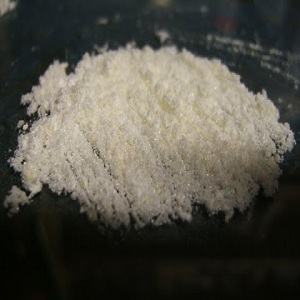4-AcO-DMT, DMT Powder
Chemical Names: 4-Acetoxy-N,N-dimethyltryptamine, 3-(2′-dimethylaminoethyl)-4-acetoxy-indole
Molecular Formula:C 14H 18N2 O2
Molecular Weight:264.305 g·mol−1
IUPAC Name:3-[2-(Dimethylamino)ethyl]-1H-indol-4-yl acetate
O-Acetylpsilocin (also known as psilacetin, 4-acetoxy-DMT, or 4-AcO-DMT) is a synthetically produced psychoactive drug and has been suggested by David Nichols to be a potentially useful alternative to psilocybin for pharmacological studies, as they are both believed to be prodrugs of psilocin. However, some users report that O-acetylpsilocin’s subjective effects differ from that of psilocybin and psilocin. It is the acetylated form of the psilocybin mushroom alkaloid psilocin and is a lower homolog of 4-AcO-MET, 4-AcO-DET, 4-AcO-MiPT and 4-AcO-DiPT.
In the body O-acetylpsilocin is deacetylated to psilocin by deacetylases/acetyltransferases during first pass metabolism[citation needed] and during subsequent passes through the liver (evident as psilacetin is also active via parenteral routes of ingestion). Claims of subjective differences in effect between the acetylated and not acetylated forms of psilocin; some users report that O-acetylpsilocin lasts slightly longer; others report that it lasts for a considerably shorter time. Many users report less body load and nausea compared to psilocin.
Some users find that the visual distortions produced by O-acetylpsilocin more closely resemble those produced by DMT than those produced by psilocin. These differences could be possible if psilacetin is active itself and not merely as a prodrug. Despite this, there have been no controlled clinical studies to distinguish the effects between psilacetin, psilocin, and psilocybin.
